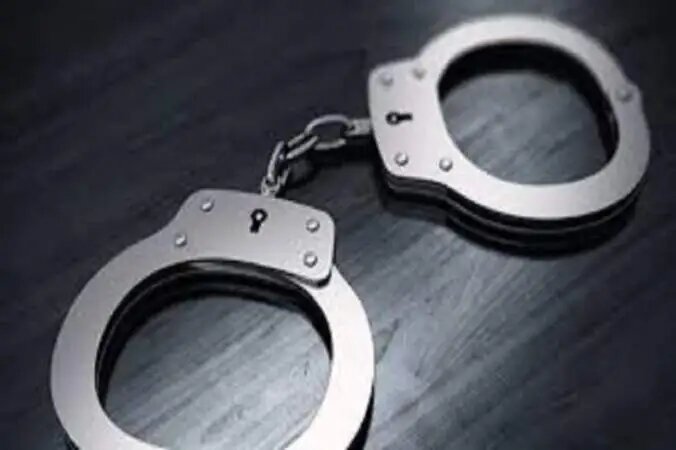Why lobby group wants top State officials jailed over SGR
By Nancy.Gitonga, February 6, 2024A coalition of stakeholders at the Coast has asked the High Court to jail government officials who have declined to make public loan contracts related to the construction of Standard Gauge Railway (SGR).
In an application filed in court through two activists Khelef Khalifa and Wanjiru Gikonyo, Okoa Mombasa Coalition wants the court to send to custody two Principal Secretaries Chris Kiptoo (National Treasury) and Mohamed Daghar (State Department for Transport) for six months for deliberately disobeying court orders issued on May 16, 2022.
“We urge this court to issue summons to the Principal Secretaries Kiptoo and Daghar to appear before it on a date to be determined, to show cause why they should not be committed to jail or penalised for contempt of court,” the two activists say. The duo accuse the government officials for defying court orders issued by the then High court Judge John Mativo by refusing to release the loan contracts for its Chinese-built railway Standard gauge.
According to the petitioners, they have made several follow up and reminders with the government officials to release the information sought and to comply with the said decree and orders of the court but the two PSs have persistently failed and or refused to act in obedience of the orders.
“The act of the respondents of refusing to heed to the orders of the court is purely on the basis of the position which they presently hold and the interest of justice in the circumstances of this case may require that the court issue a suspended sentence to Chris Kiptoo and Mohamed Daghar,” they state in their court papers.
Khalifa and Gikonyo says they are seeking to obtain all contracts, agreements, and studies for the construction and operation of the SGR. Okoa Mombasa has been attempting since 2019 to obtain the SGR documents through Access to Information Act requests, but the government has refused, citing confidentiality clauses and issues of national security.
The move was made after the government directed that all containerised cargo at the Port of Mombasa be transported inland through the SGR, a development that had negative impact on the Kenyan coast’s port-based economy as it forced logistics companies to move their operations to container depots in the country’s interior, they argue.
“We have a right to know the details of the project: How our money is being spent, the consequences of a loan default, and the government’s decision-making processes in signing the deal. Right now, we know none of this – the Kenyan public is completely in the dark,” says Khalifa.
The contracts, which date from 2012 to 2013, were executed by the Kenyan government, the China Road and Bridge Corporation and the Export-Import Bank of China.
Financing documents
Okoa Mombasa says Ministry of Roads and Transport Cabinet Secretary Onesimus Kipchumba Murkomen released a limited number of SGR financing documents in November 2022, but those documents did not include the three agreements.
They include EPC Turnkey Commercial Contract between Kenya Railways Corporation and China Road and Bridge Corporation (Construction of the civil works of Mombasa-Nairobi SGR project) signed on July 2012. Contract between Kenya Railways Corporation and China Road and Bridge Corporation (for supply and installation of the facilities, locomotives and rolling stock for the Mombasa-Nairobi SGR project) signed on October 2012.
In addition is Memorandum of Understanding on the Mombasa-Nairobi SGR project between the Government of Kenya (represented by the Treasury) and the Export-Import Bank of China signed on August 2013. “The release of these SGR contracts is important because Kenyans have a right to know how our taxes are being spent,” Khalifa of Okoa Mombasa adds.
“We also have a right to participate in decisions about how our taxes are spent, and to hold our government accountable. We can’t participate if we don’t have adequate information.”
Built at a cost of more than $4.7 billion, SGR is Kenya’s most expensive infrastructure project and continues to face criticism. Since its inception, the project has been marred by accusations of being overpriced and damaging to the environment. It has also been criticised for being highly unprofitable.
The 453-mile track connects the country’s capital, Nairobi, with the port city of Mombasa and the Rift Valley town of Naivasha. Construction began in 2014, with the primary contractor being the China Road & Bridge Corporation (CRBC) and most of the funding coming in form of loans from the Export-Import Bank of China.
Passenger and cargo trains operate on the SGR, with passengers welcoming it for reducing travel time when compared to using buses.
However, cargo owners are avoiding it for various reasons among them being higher fees and more time in clearing goods when compared to using trucks.
Critics also worry about its debt burden on Kenya, its financial viability, and environmental impact. The Africa Star Railway Operation company, a CRBC subsidiary that operates the railway’s passenger and cargo service, has never made a profit in the four years of the SGR’s operation and Kenyan taxpayers have had to fill the gap to sustain the company’s operations.
Environmentalists, meanwhile, say the construction and operation of the railway, which passes through key wildlife areas such as national parks, has destroyed and degraded important ecosystems.
